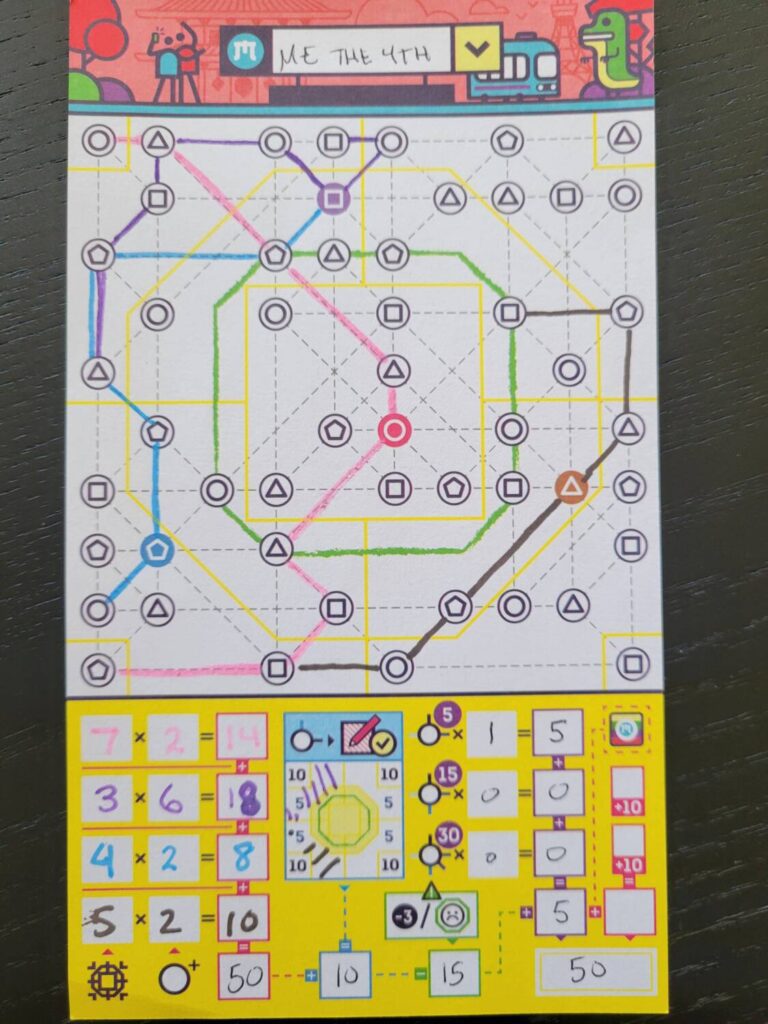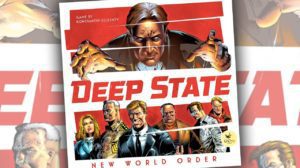When it comes to roll-and-writes, my gold standard is still The Guild of Merchant Explorers (yes, I know it’s not technically a roll-and-write). I think this is primarily because I like maps, and if I’m going to puzzle solitaire style with folks, I like having a little map dotted with features and accomplishments at the end.
I also love public transit, and subway maps are just about the coolest looking map you can get this side of your municipality. Next Station: Tokyo, does a great job being what it intends to be — a subway coloring book that you can relax with.

This is my first review of a game as a solo player. I did not play this game with other players, and because the only thing that really changes is more people in the room with you, I think that’s fine in this case. For review purposes, I actually just played the game four-handed, because I wanted to try the puzzle from several angles.
But, if you’re familiar with the flip-and-write variant of the roll-and-write, you’ll be right at home here. There are four subway lines, each represented by a different colored pencil. When you’ve got that pencil, you’re working on that line (for example, purple) specifically until the end of the round.

Every turn, somebody flips a card from the deck. The cards are either red or green, and come with symbols on them. For example, a card with an O is flipped —- you must connect to an O station from one of the ends of the line you’re working on. You’re not allowed to draw a line across another line, though lines can meet and continue on through stations, like real subways. Sometimes, there are cards that let you connect to any station you want, and also run parallel to another line, as long as it isn’t the same color. Once the fifth green card has been revealed, everyone passes their pencils to the next player clockwise. Because there are 11 cards, and only 5 green ones, rounds can range from 5 to 11, so there’s a bit of push-your-luck involved. At the end of each round, you total up your score for the line, which is the number of different districts you made it into with that line multiplied by the most stations on that line in a single district.

Once you’ve had each of the four pencils, you’ve got four subway lines, and the game is over. There’s some additional scoring for making junctions with a lot of lines connecting to them, and you’re penalized for not connecting to stations that are pre-connected before the game starts. That’s about it.

Now, this experience is for puzzlers, and while I’m not a puzzle queen, I do enjoy a low-interaction brain-burner from time to time. This one is pleasing, and you often have the painful and crunchy experience of realizing that the big points you scored on another turn have blocked your ability to expand a different line in a later round. That’s fun, and often results in the creation of suboptimal lines, which feels very “baby’s first city planner”. Connecting multiple lines to a single station is a huge reward in points, and is quite difficult to do, as you might notice from my photos. Not sure how it compares to Next Station: London, but I’m guessing you’ll like this if you liked that.
There are a few additional modules you can add to the game to increase the difficulty. Sure, that’s great, but I highly recommend getting some fine-tip paint markers to play a game like this — the pencils are fun, but it’s pretty satisfying to paint your lines on in a dramatic fashion.
I haven’t played any of the other games in the series, but as a solo-together experience, I think this is a roll-and-write that is just as good as any of its class. Plus: trains!












I’m having a hard time understanding how a review with no criticisms and a game described as being as good as any of its peers leads to a 2.5/5 “mediocre” score. Maybe the subtext should be obvious but that makes no sense to me.